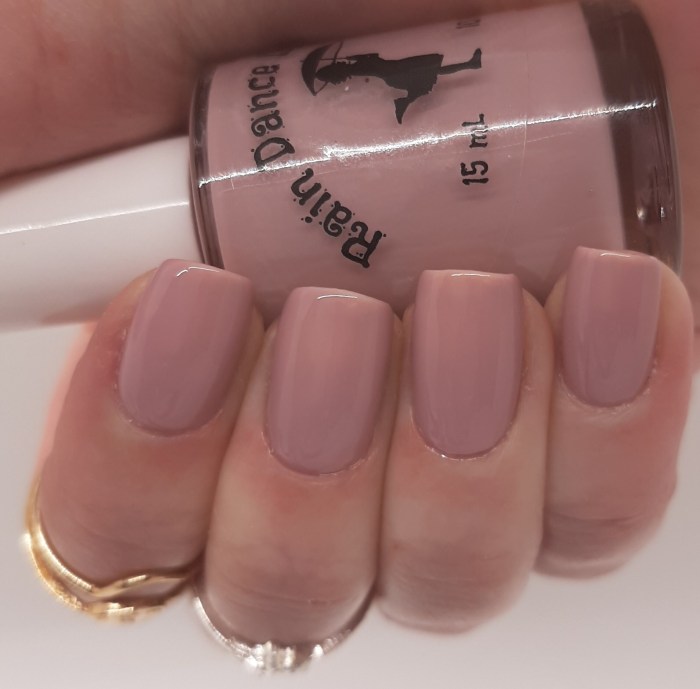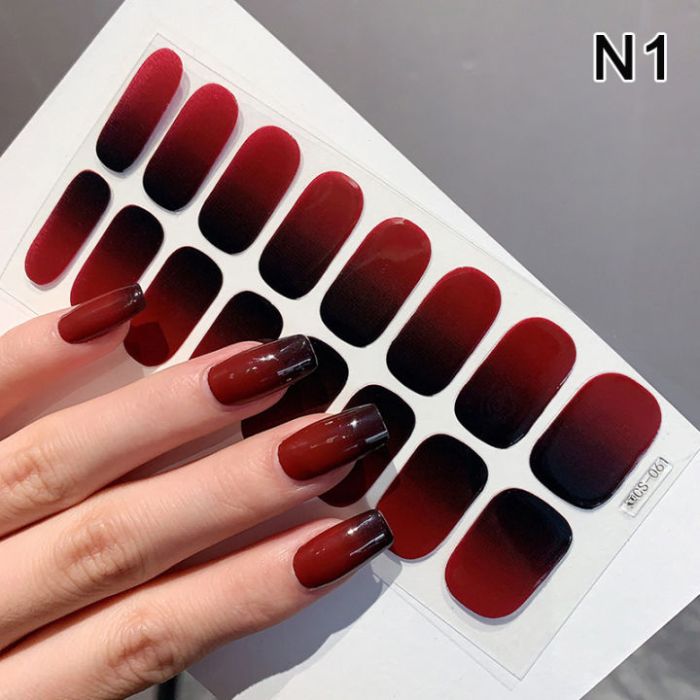Creme Nail Polish A Comprehensive Guide
Creme Nail Polish Market Overview
The creme nail polish market is a significant segment within the broader beauty industry, characterized by its consistent popularity and diverse offerings. This section provides an overview of the market size, key players, pricing strategies, and a comparative analysis of leading brands.
Current Market Size and Trends
The global creme nail polish market is experiencing steady growth, driven by increasing consumer demand for affordable and readily available nail color options. Trends indicate a shift towards more sustainable and ethically sourced ingredients, as well as a focus on diverse and inclusive color palettes reflecting various skin tones and preferences. Market research suggests a projected annual growth rate of [insert projected growth rate and source if available, otherwise remove this sentence], fueled by factors such as rising disposable incomes and increasing awareness of personal grooming.
Key Players and Market Share
Several major players dominate the creme nail polish market, each employing distinct strategies to capture market share. These include established brands like OPI, Essie, and Revlon, along with emerging brands focusing on niche markets such as vegan or cruelty-free options. Precise market share data varies depending on the source and region, but these brands consistently rank among the top performers.
[Insert market share data if available, otherwise remove this sentence]. Competitive dynamics are intense, with ongoing innovation in formulations, colors, and packaging.
Pricing Strategies
Pricing strategies in the creme nail polish market vary significantly, reflecting differences in brand positioning, product quality, and distribution channels. Luxury brands often command premium prices, emphasizing high-quality ingredients and sophisticated packaging. Drugstore brands typically adopt competitive pricing strategies, offering a wider range of options at lower price points. Some brands utilize value-based pricing, emphasizing the value proposition of their products in relation to their price.
Creme nail polish offers a classic, opaque finish beloved for its versatility. To understand its appeal, it’s helpful to first grasp the fundamental properties of nail polish itself; for a comprehensive explanation, check out this informative resource on what is nail polish. Returning to creme polish, its smooth, even application makes it a perfect choice for both beginners and seasoned nail enthusiasts alike, offering a polished look without fuss.
Comparison of Top 5 Creme Nail Polish Brands

Source: etsystatic.com
| Brand | Price Range | Availability | Customer Reviews (Average Rating) |
|---|---|---|---|
| OPI | $[Price Range] | Widely available (drugstores, salons, online) | [Average Star Rating]/5 |
| Essie | $[Price Range] | Widely available (drugstores, salons, online) | [Average Star Rating]/5 |
| Revlon | $[Price Range] | Widely available (drugstores, supermarkets, online) | [Average Star Rating]/5 |
| Sally Hansen | $[Price Range] | Widely available (drugstores, supermarkets, online) | [Average Star Rating]/5 |
| [Brand 5] | $[Price Range] | [Availability] | [Average Star Rating]/5 |
Creme Nail Polish Formulation and Ingredients
Understanding the formulation and ingredients of creme nail polish is crucial for both consumers and manufacturers. This section details the typical components, their functions, and the impact of various ingredients on the final product.
Typical Ingredients, Creme nail polish
Creme nail polish typically consists of a blend of film-forming polymers (resins), solvents, plasticizers, pigments, and additives. The specific proportions and types of ingredients vary depending on the brand and desired properties of the polish. Common solvents include ethyl acetate, butyl acetate, and ethanol, which help to dissolve the other components and create a smooth, even application. Plasticizers, such as dibutyl phthalate (DBP), improve the flexibility and durability of the film.
Pigments provide color and opacity, while additives can enhance properties such as shine, drying time, or chip resistance.
Role of Key Ingredients
- Resins: Form the base film, providing adhesion and durability.
- Solvents: Dissolve the other ingredients and aid in application.
- Plasticizers: Enhance flexibility and prevent cracking.
- Pigments: Provide color and opacity.
- Additives: Improve various properties such as shine, drying time, or chip resistance.
Comparison of Resins
Nitrocellulose is a common resin used in creme nail polish, known for its fast drying time and excellent film formation. Other resins, such as acrylic polymers, may be used to enhance flexibility or durability. The choice of resin significantly influences the final properties of the nail polish, including its shine, flexibility, and longevity.
Impact of Pigments
Pigments are crucial for determining the color and opacity of creme nail polish. Different pigments offer varying levels of opacity, color intensity, and lightfastness. The concentration and type of pigment used directly impact the final appearance of the polish.
Application and Longevity of Creme Nail Polish
Achieving a flawless and long-lasting creme nail polish manicure requires proper application techniques and an understanding of the factors that affect its longevity. This section provides a step-by-step guide and discusses techniques for optimal results.
Step-by-Step Application Guide
- Prepare nails: Clean and shape nails, push back cuticles.
- Base coat: Apply a thin layer of base coat for better adhesion and protection.
- Color coat: Apply two thin coats of creme nail polish, allowing each coat to dry completely.
- Top coat: Apply a thin layer of top coat for shine and protection.
Techniques for a Smooth Finish
To achieve a smooth and even finish, use thin coats, avoid thick applications, and allow each coat to dry completely before applying the next. Use gentle, even strokes, and avoid dragging the brush across the nail surface.
Factors Affecting Longevity
Several factors can influence the longevity of a creme nail polish manicure, including the quality of the polish, proper application, and external factors like exposure to water and detergents. Using a good quality base and top coat, as well as avoiding harsh chemicals, can significantly extend the life of the manicure.
Comparison with Other Finishes
Creme nail polish offers a classic, versatile finish. Compared to gel polish, it’s easier to apply and remove but doesn’t last as long. Matte finishes offer a different aesthetic, while glitter polishes add sparkle but can be more challenging to apply evenly.
| Finish Type | Longevity | Application Difficulty | Appearance |
|---|---|---|---|
| Creme | [Number] days | Easy | Smooth, even color |
| Gel | [Number] days | Moderate | High shine, durable |
| Matte | [Number] days | Easy | Non-shiny finish |
| Glitter | [Number] days | Moderate | Sparkly finish |
Creme Nail Polish Colors and Trends
Creme nail polish offers a vast spectrum of colors, constantly evolving with fashion and seasonal trends. This section explores current and upcoming color trends, organizes them into seasonal palettes, and examines the psychological associations of different colors.
Current and Upcoming Color Trends
Current trends include muted earth tones, sophisticated jewel tones, and bold, vibrant hues. Upcoming trends may include [insert predicted trends based on fashion forecasts and industry insights, otherwise remove this sentence]. The beauty industry closely follows broader fashion and design trends to anticipate upcoming color preferences.
Seasonal Palettes

Source: lazcdn.com
Creme nail polish colors are often associated with specific seasons:
- Spring: Pastel shades, light pinks, and soft yellows.
- Summer: Bright corals, vibrant blues, and sunny yellows.
- Autumn: Deep reds, burnt oranges, and warm browns.
- Winter: Deep blues, rich purples, and classic reds.
Psychological Associations
Different colors evoke various psychological associations. For example, red is often associated with passion and confidence, while blue represents calmness and tranquility. These associations influence consumer choices and brand marketing strategies.
Hypothetical Marketing Campaign
A hypothetical marketing campaign for a new creme nail polish color, “Twilight Bloom,” a deep amethyst purple, could emphasize its luxurious feel and sophisticated appearance. The campaign could feature imagery of a glamorous evening setting, emphasizing the color’s ability to enhance personal style and confidence.
Consumer Perception and Preferences
Understanding consumer perception and preferences is essential for success in the creme nail polish market. This section analyzes consumer feedback, purchasing decisions, and common complaints and compliments.
Consumer Preferences
Consumers often prioritize factors such as color, longevity, ease of application, and price when choosing a creme nail polish. The availability of specific shades and the overall brand reputation also play significant roles in purchasing decisions.
Influencing Factors
Social media influence, celebrity endorsements, and word-of-mouth recommendations significantly impact consumer choices. Reviews and ratings on online platforms such as Amazon and Sephora heavily influence purchasing decisions.
Customer Reviews and Feedback
Analyzing customer reviews reveals common themes such as praise for vibrant colors and easy application, while complaints often focus on chipping, poor longevity, or difficult removal.
Common Complaints and Compliments
- Compliments: Wide color range, easy application, long-lasting, affordable.
- Complaints: Chipping, uneven application, streaking, poor longevity.
Environmental Impact of Creme Nail Polish
The environmental impact of creme nail polish production and disposal is a growing concern. This section explores the use of sustainable ingredients, packaging options, and environmentally responsible practices within the industry.
Environmental Impact of Production and Disposal
The production of creme nail polish involves the use of various chemicals and resources, contributing to environmental pollution. Disposal of empty bottles and the potential for chemical runoff also pose environmental challenges. The use of certain ingredients, such as some plasticizers, has raised concerns about their potential impact on human health and the environment.
Sustainable and Eco-Friendly Ingredients
Many brands are now focusing on using more sustainable and eco-friendly ingredients, such as water-based solvents and plant-derived pigments. The use of biodegradable and recyclable packaging is also becoming more prevalent.
Comparison of Packaging Options
Glass bottles are generally considered more sustainable than plastic, due to their recyclability and potential for reuse. However, the transportation of glass bottles requires more energy. The development of innovative, eco-friendly packaging solutions remains an area of ongoing research and development within the industry.
Brands Committed to Environmental Responsibility
Several brands are actively promoting environmentally responsible practices, including the use of sustainable ingredients, recyclable packaging, and carbon-neutral manufacturing processes. [Insert examples of such brands if available, otherwise remove this sentence]. Consumers are increasingly demanding more transparency and accountability from brands regarding their environmental impact.
Creme Nail Polish vs. Other Finishes
Creme nail polish is just one of many finishes available. This section compares and contrasts creme with gel, matte, and glitter finishes, highlighting the advantages and disadvantages of each.
Comparison of Finishes
| Finish Type | Longevity | Application | Removal | Cost |
|---|---|---|---|---|
| Creme | Short | Easy | Easy | Low |
| Gel | Long | Moderate | Difficult | High |
| Matte | Moderate | Easy | Easy | Low to Moderate |
| Glitter | Moderate | Difficult | Difficult | Low to Moderate |
Clarifying Questions: Creme Nail Polish
How long does creme nail polish typically last?
The longevity of creme nail polish depends on several factors, including application technique, base coat use, top coat application, and individual lifestyle. Generally, you can expect a creme manicure to last around 5-7 days before chipping becomes noticeable.
Can I use creme nail polish over gel polish?
No, it’s not recommended to apply creme nail polish directly over gel polish. Gel polish requires removal with acetone, and applying creme polish on top won’t adhere properly. You should remove the gel polish completely before applying creme nail polish.
What is the best way to remove creme nail polish?
Use an acetone-based nail polish remover and cotton pads or balls. Soak each nail for a few seconds, then gently wipe away the polish. For stubborn polish, re-soak and gently scrape with a wooden cuticle pusher.
















